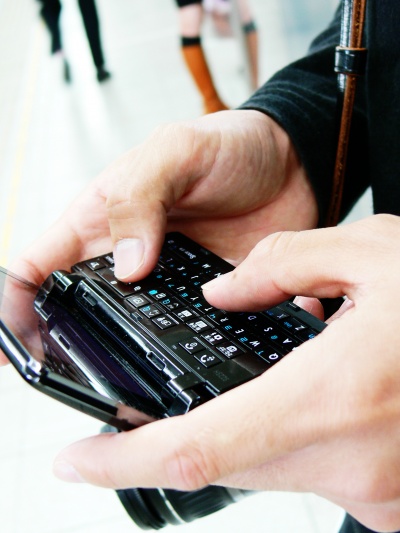If you wish to contribute or participate in the discussions about articles you are invited to contact the Editor
Personal Applications: Difference between revisions
Rui.Pereira (talk | contribs) No edit summary |
Rui.Pereira (talk | contribs) No edit summary |
||
| Line 30: | Line 30: | ||
== Outdoor Navigation == | == Outdoor Navigation == | ||
[[Outdoor Navigation]] consists in the navigation in outdoor environments such as | [[Outdoor Navigation]] consists in the navigation in outdoor environments such as nature trails. [[Outdoor Navigation]] is used mainly by outdoor enthusiasts (such as hikers, backpackers, geocaching enthusiasts, mountaineers or bikers) and outdoor workers (such emergency workers, wildlife preservation workers, forestry workers, farmers or mining workers)<ref>[[Wikipedia:GNSS applications|GNSS applications on Wikipedia]]</ref>. | ||
Outdoor | [[Outdoor Navigation]] is somewhat different from [[Pedestrian Navigation]] or [[Road Navigation]] since it uses the concepts of trails and waypoints instead of a turn by turn navigation. Maps are not always required since individual trails can be loaded on the device or trails can be created from hikes. When present, maps are very different from the ones used in [[Pedestrian Navigation]] or [[Road Navigation]]; outdoor navigation maps more closely related with topographic charts and military charts, rather than being street and road oriented. | ||
Detailed information about Outdoor Navigation can be found [[Outdoor Navigation|here]]. | Detailed information about Outdoor Navigation can be found [[Outdoor Navigation|here]]. | ||
Revision as of 00:03, 9 April 2011
| Applications | |
|---|---|
| Title | Personal Applications |
| Author(s) | Rui Barradas Pereira. |
| Level | Basic |
| Year of Publication | 2011 |
The availability of cheap GNSS chipsets allowed for integration of GNSS in different consumer products such as mobile phones. As a consequence, GNSS started being used not only for professional activities but also for leisure and entertainment purposes.
Some of these uses bring comfort to the user and can save the user time. Others are just to facilitate social interactions not bringing a tangible benefit to the user. The fact that the technology is available and free to use, allows for these types of uses.
Overview of Personal Applications
Given the easy availability of GNSS positioning in consumer products the use of GNSS positioning for personal applications has become usual and new uses for the technology are constantly appearing.
In this section we detail four of the most common personal applications for the GNSS technology.
Pedestrian Navigation consists in the navigation of pedestrians in urban environments. Pedestrian navigation often offers pedestrian specific maps and multi-modal navigation that combines walking directions with all available modes of transportation and even routing in indoor environments[1].
Pedestrian navigation requires more complex maps and algorithms to provide an adequate navigation experience than road navigation which is a simpler, much more predictable and contained environment.
Detailed information about Pedestrian Navigation can be found here.
Outdoor Navigation consists in the navigation in outdoor environments such as nature trails. Outdoor Navigation is used mainly by outdoor enthusiasts (such as hikers, backpackers, geocaching enthusiasts, mountaineers or bikers) and outdoor workers (such emergency workers, wildlife preservation workers, forestry workers, farmers or mining workers)[2].
Outdoor Navigation is somewhat different from Pedestrian Navigation or Road Navigation since it uses the concepts of trails and waypoints instead of a turn by turn navigation. Maps are not always required since individual trails can be loaded on the device or trails can be created from hikes. When present, maps are very different from the ones used in Pedestrian Navigation or Road Navigation; outdoor navigation maps more closely related with topographic charts and military charts, rather than being street and road oriented.
Detailed information about Outdoor Navigation can be found here.
Social Networking
Social Networking as become a part of our daily life and millions of user use social network to interact with its social and professional contacts. The concept of posting information about "what are you doing" very rapidly progressed to post "where are you".
Location enabled Social Networking allows you to post your current location or to check into places or venues. This allows the user's friends to know where the user is and the user can know what other user are at the same location where he is.
Detailed information about Social Networking can be found here.
Photography Geocoding
The popularity of applications such as Google Earth and Google Maps and the possibility of posting geo-referenced pictures lead to the need geocoding photos. A geocoded photo has the location of the photographer embedded in the files. This information includes at least latitude and longitude but might include also altitude and the bearing of the camera[3].
The most practical way of geocoding photos is by doing it automatically on the camera if the camera has an embedded GNSS receiver or can be connected to an add-on GNSS receiver. GNSS-enabled mobile phones usually geotag photos automatically[4].
Detailed information about Photography Geocoding can be found here.
Notes

